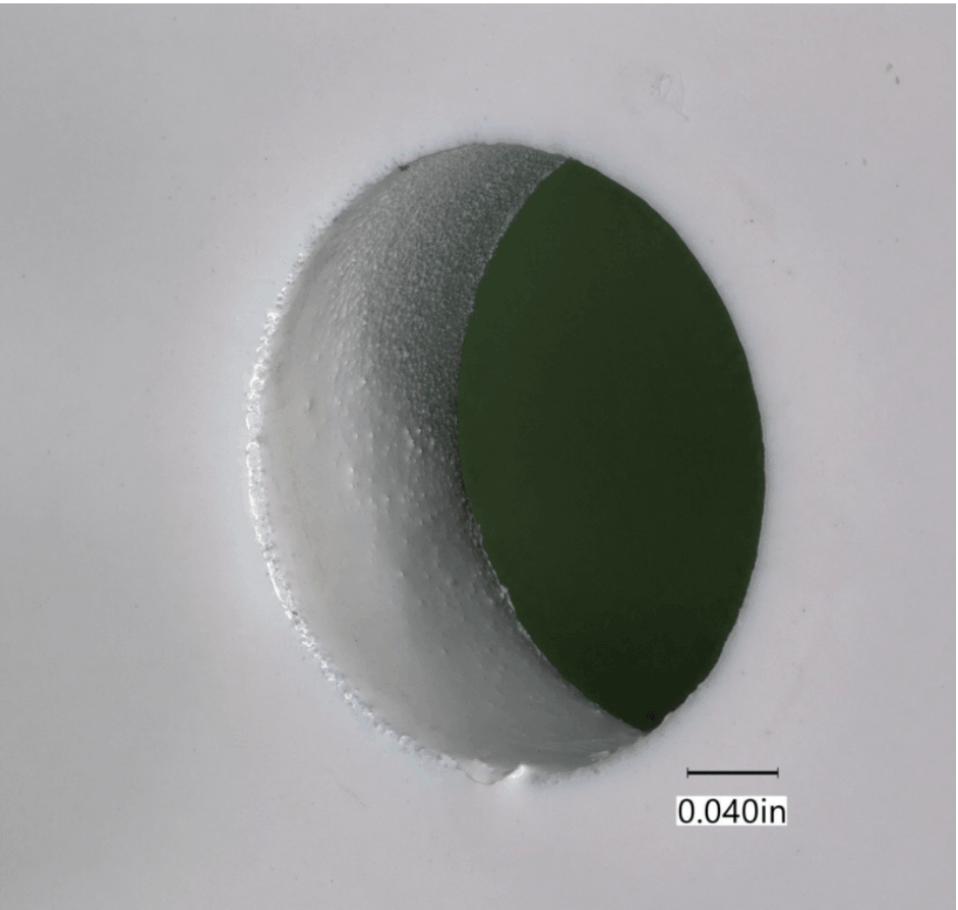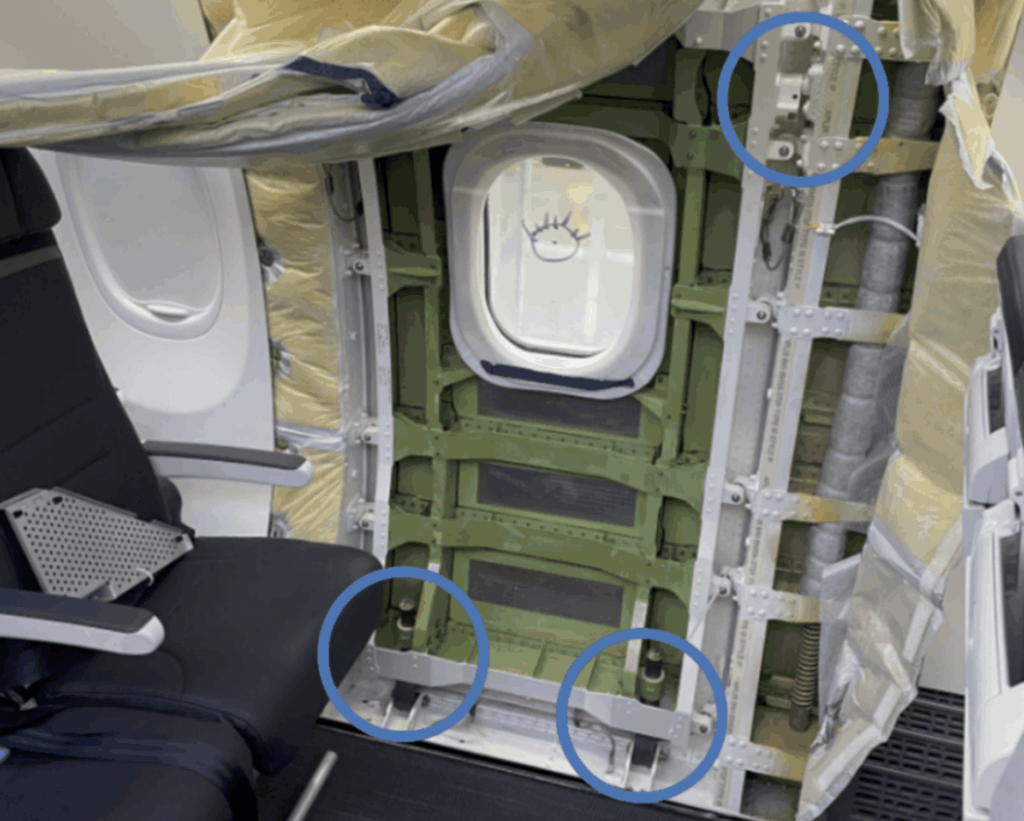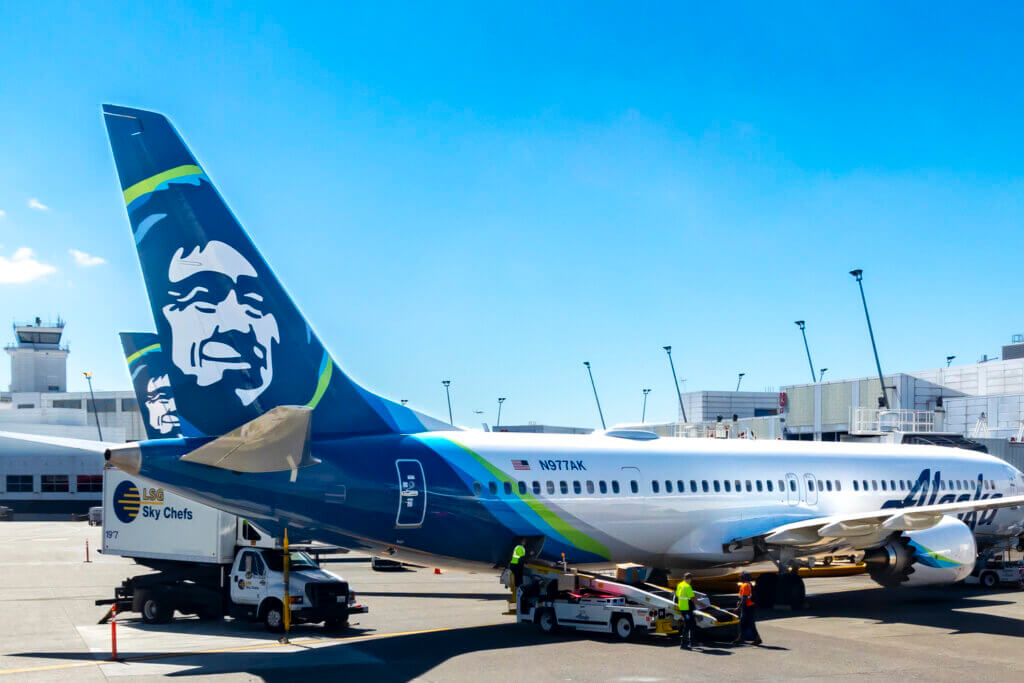In its preliminary report, the NTSB says the AS1282 bolts were missing. This corroborates the information revealed by an anonymous Boeing employee last month, citing specific issues related to the production of the aircraft involved – N704AL.
In my last update about the Alaska Airlines flight 1282 incident, we learned from an anonymous source that multiple failures led to the near-disastrous incident. While the responsibility lies solely with Boeing at the end of the day, the whistleblower unveiled a mind-boggling dysfunctional system in place with subcontractor SpiritAerosystem that contributed significantly to what happened.
Guess what? The NTSB’s preliminary report basically validates the information from the anonymous source.
NTSB Says The AS1282 Bolts Were Missing
Before we get into the information confirming what the whistleblower reported on, let’s discuss the major finding of the preliminary report – the NTSB says the AS1282 bolts were missing. Yup, those bolts that are supposed to keep the door plug from translating up and, therefore, from blowing out of the aircraft weren’t present to begin with.
How did they come to this conclusion, you ask? Aside from the fact that the bolts were never found, there was no damage indicating that bolts were violently removed from their installation locations, and the finish in said installation locations is pristine.

Moreover, damage to other portions of the door plug, such as to the pressure fits and pads, was consistent with “upward, outboard, and aftward motion,” evidencing that the door plug moved up, out, and away (to the rear) of the aircraft. This also indicates that the stay bolts weren’t there to stop the door from moving up, allowing it to be pushed out by the aircraft’s internal pressure until it eventually flew away.
Other damage evidencing the violent departure of the door plug is outlined in the report, too. However, the most damning part of the report states that Spirit AeroSystems removed the missing bolts to correct rivet issues near the door plug and never reinstalled them. Records show that this work was completed on September 19, 2023.
A post-repair photo obtained from a “text message” between two employees – likely in the aforementioned SAT system – showed the bolts were missing after the work was completed.

Naturally, the question becomes WHY weren’t the bolts re-installed, and if Boeing employees were aware of this, why wasn’t work performed to rectify this? Those questions, unfortunately, remain unanswered. Apparently, this discussion happened at some point during or after the second shift that day, but it’s unclear what happened immediately after.
The NTSB states in its report that it will be interviewing Boeing and Spirit employees at a future date. Like I said, we’re gonna have to wait a WHILE to learn what really happened.
So, there you have it; the NTSB says the AS1282 bolts were missing and shows us strong evidence that they weren’t there at all. But how does this corroborate the whistleblower’s comment?
Well, as you’ll recall from my previous post, the person states:
If you have been paying attention to this situation closely, you may be able to spot the critical error: regardless of whether the door is simply opened or removed entirely, the 4 retaining bolts that keep it from sliding off of the door stops have to be pulled out. A removal should be written in either case for QA to verify install, but as it turns out, someone (exactly who will be a fun question for investigators) decides that the door only needs to be opened, and no formal Removal is generated in CMES (the reason for which is unclear, and a major process failure).
Therefore, in the official build records of the airplane, a pressure seal that cannot be accessed without opening the door (and thereby removing retaining bolts) is documented as being replaced, but the door is never officially opened and thus no QA inspection is required.
This entire sequence is documented in the SAT, and the nonconformance records in CMES address the damaged rivets and pressure seal, but at no point is the verification job reopened, or is any record of removed retention bolts created, despite it this being a physical impossibility. Finally with Spirit completing their work to Boeing QAs satisfaction, the two rivet-related records in CMES are stamped complete, and the SAT closed on 19 September 2023. No record or comment regarding the retention bolts is made.
That’s basically what the NTSB found. The “text message” revealed that warranty work requiring the removal and replacement of the door plug was done, but no official record of the door plug coming out, nor any quality-assurance inspections thereafter, exists. Like the NTSB, our source has no idea who was responsible for this lapse, and identifying this person/team will be at the core of the investigation from here on out.
Both the whistleblower and the preliminary NTSB report say virtually the same thing. It’s quite remarkable, really. However, it’s flabbergasting how well-documented this incident is, yet it still occurred. This certainly does point towards deeper issues at both Boeing and Spirit, and I’m sure we’ll learn more about them in the future.
Final Thoughts
Aside from validating the whistleblower’s story about what happened, the fact that the NTSB says the AS1282 bolts were missing confirms that this was, in fact, a manufacturing issue – not an engineering one. The AS1282 was the result of a series of unfortunate events and doesn’t prove that the jets are inherently unsafe.
As I stated before, the 737 MAX 9s are likely even safer now than when they left the factory, thanks to the FAA’s inspection/repair mandates and the work put in by Alaska’s and United’s own teams. I certainly wouldn’t hesitate to hop on one of these birds again today. However, if you still feel uncomfortable about doing so, refer to my last post on how to (possibly) avoid them.

